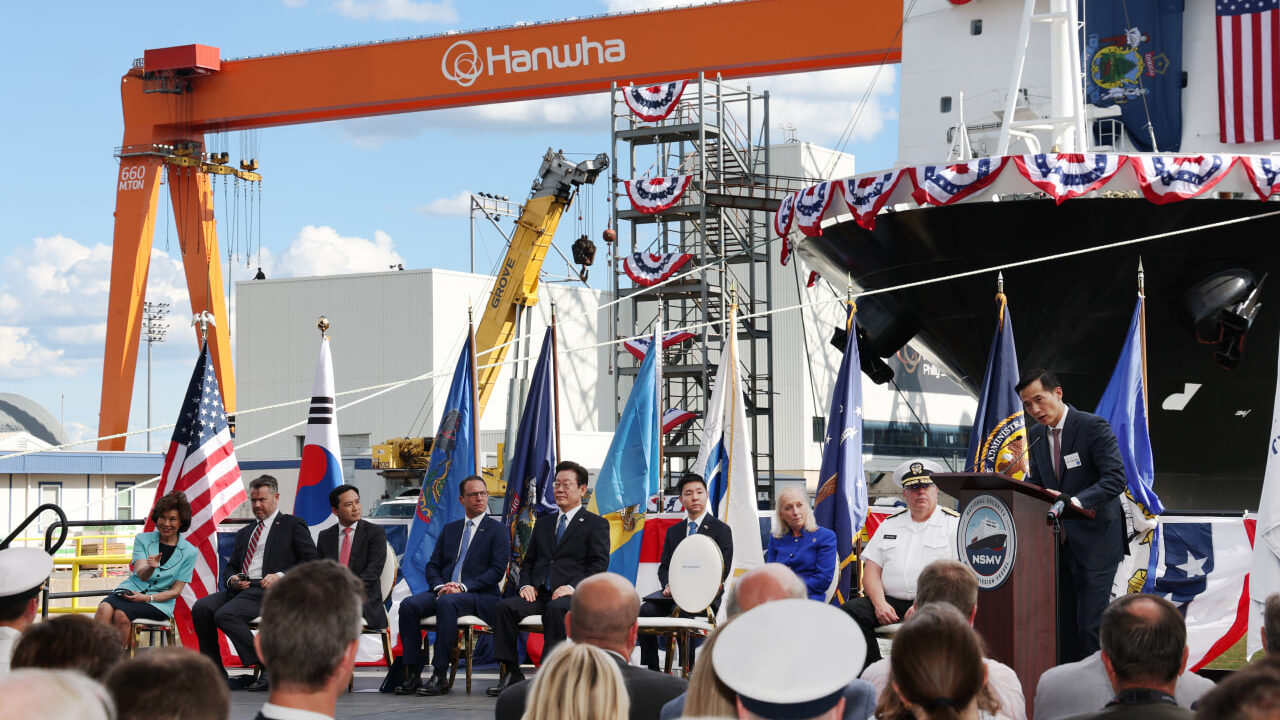World
US to Share Nuclear Submarine Technology with South Korea

In a significant diplomatic move, President Donald Trump announced on social media that the United States will share sensitive nuclear submarine propulsion technology with South Korea. This decision marks a notable shift from the previous administration, which had withheld such access from the key Indo-Pacific ally. Trump stated that South Korea will construct its nuclear-powered submarines at the Philadelphia Shipyard, revitalizing American shipbuilding capabilities.
In his post on Truth Social, Trump emphasized, “Shipbuilding in our Country will soon be making a BIG COMEBACK.” The announcement comes as South Korea’s Hanwha Group acquired the Philadelphia Shipyard from a Norwegian investment firm last year. This acquisition reflects South Korea’s strategic intent to enhance its collaboration with the U.S. Navy.
Details of the Agreement
Trump further indicated that South Korea has agreed to pay $350 billion in exchange for the reduction of tariffs imposed by the White House. This financial arrangement underscores the importance of trade relations between the two nations. The nuclear propulsion technology, which is closely held by the United States, the United Kingdom, and Australia under the AUKUS agreement, has been sought after by South Korea for its potential benefits in regional security.
South Korean President Lee Jae Myung commented on the past discussions surrounding this technology, suggesting that previous negotiations may have been misinterpreted by the Trump administration as South Korea seeking nuclear weapons rather than merely the fuel necessary for submarines. Lee articulated that acquiring nuclear-powered submarines would enhance South Korea’s contributions to regional security, echoing points made by U.S. and British officials during their support for Australia’s submarine acquisition in 2021.
Challenges Ahead for Philadelphia Shipyard
The proposal for South Korea to build its submarines in the United States raises numerous questions about the capabilities of the American maritime industrial base. Historically, the Philadelphia Shipyard focused on commercial ship construction; however, under the new management from Hanwha, there is a clear commitment to pursue U.S. Navy programs. Transitioning to a facility capable of constructing nuclear submarines represents an enormous challenge, one that Australia is expected to navigate over the next two decades.
Hanwha will likely encounter significant hurdles in attracting a skilled workforce necessary for such complex construction. The U.S. Navy has initiated an extensive, multi-year campaign to bolster its maritime workforce, aimed specifically at submarine production, yet is struggling to meet its recruitment goals due to high attrition rates among new workers.
This development in U.S.-South Korea relations, along with the implications for the American shipbuilding industry, will be closely monitored as both nations navigate the complexities of defense collaboration in an evolving geopolitical landscape.
-

 Business2 weeks ago
Business2 weeks agoIconic Sand Dollar Social Club Listed for $3 Million in Folly Beach
-

 Politics2 weeks ago
Politics2 weeks agoAfghan Refugee Detained by ICE After Asylum Hearing in New York
-

 Health2 weeks ago
Health2 weeks agoPeptilogics Secures $78 Million to Combat Prosthetic Joint Infections
-

 Science2 weeks ago
Science2 weeks agoResearchers Achieve Fastest Genome Sequencing in Under Four Hours
-

 Lifestyle2 weeks ago
Lifestyle2 weeks agoJump for Good: San Clemente Pier Fundraiser Allows Legal Leaps
-

 Health2 weeks ago
Health2 weeks agoResearcher Uncovers Zika Virus Pathway to Placenta Using Nanotubes
-

 World2 weeks ago
World2 weeks agoUS Passport Ranks Drop Out of Top 10 for First Time Ever
-

 Business2 weeks ago
Business2 weeks agoSan Jose High-Rise Faces Foreclosure Over $182.5 Million Loan
-

 Science2 weeks ago
Science2 weeks agoMars Observed: Detailed Imaging Reveals Dust Avalanche Dynamics
-

 Entertainment2 weeks ago
Entertainment2 weeks agoJennifer Lopez Addresses A-Rod Split in Candid Interview
-

 World2 weeks ago
World2 weeks agoRegional Pilots’ Salaries Surge to Six Figures in 2025
-

 World2 weeks ago
World2 weeks agoObama Foundation Highlights Challenges in Hungary and Poland








